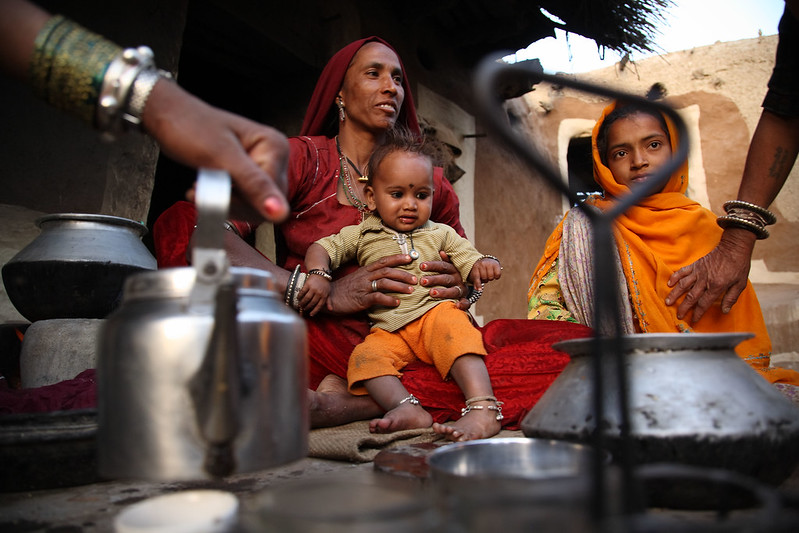 According to a study by The Lancet, rising temperatures and increasingly frequent heat waves have increased heat-related deaths in India by 55% from 2004 to 2021. Those most at risk are impoverished and lower caste, without easy access to water to cool their homes and keep themselves hydrated.
According to a study by The Lancet, rising temperatures and increasingly frequent heat waves have increased heat-related deaths in India by 55% from 2004 to 2021. Those most at risk are impoverished and lower caste, without easy access to water to cool their homes and keep themselves hydrated.
The Impact of Rising Temperatures on Lower-Caste Women
For much of India, fetching water is traditionally a woman’s role. As such millions of lower caste women are made to fetch hours up to 10 times a day in extreme heat, making them ‘doubly susceptible’. This hard labor is necessary for helping their families and themselves survive extreme temperatures. These trips are made especially difficult by some upper caste communities who cut off the lower caste’s water supply, believing that Dalit and Adivasi people, who are of the lowest caste, will pollute the water by touching it. This prejudice forces Dalit women and girls to go further for water, causing potential health issues and girls to miss school.
Unaffordable and Inaccessible Water
Water is difficult to access for millions of families across India and is often unaffordable. In some communities, Dalits are charged $9 monthly to access mechanized wells. According to Oxford University Press, the average Dalit household income is between $240 and $270 annually. Therefore, water access eats up a large portion of lower caste household’s income and is completely unaffordable for many. Due to water being difficult to access and often unaffordable, many ration their daily intake, bearing the effects of dehydration like “dizziness and exhaustion.”
Caste System and Disaster Relief
India’s Heat Action Plans, which aim to reduce heath-related death and health complications, have been found by the Centre for Policy Research to be unequally implemented in lower caste communities. Unequal implementation of relief is a common experience for India’s impoverished. Caste often determines what treatment you will receive during natural disasters. During floods and cyclones, Dalit and Adivasi people are often refused shelter by temples and relief shelters due to their caste. Lower castes are also disadvantaged as their communities are often in geographically vulnerable positions, in poorly built homes that are difficult to access due to the lack of paved streets.
The Ultra-White Paint and Rising Temperatures
While increased heat in India is dire for many lower caste households, a few low-cost high-impact solutions exist. Painting lower caste homes Ultra-White is one of these solutions. The program, started by the Mahila Housing Trust aids in reducing the effects of extreme heat in India. The Mahila Housing Trust provides hundreds of impoverished families across India with cans of Ultra-White paint, which, when applied to roofs, can cool the interior by up to 8°C. In doing so, the Ultra-White paint reduces the likelihood of heat-related health complications. As many lower caste households live in brick homes with poor ventilation, the heat accumulated by these structures during the day makes them unbearable, with many resorting to sleeping outside.
Looking Ahead
With the addition of Ultra-White paint, however, indoor temperatures are much more bearable allowing people to spend more time indoors, protected from extreme heat. Likewise, lower indoor temperatures mean that households require less water to cool their homes and stay hydrated, reducing the need to fetch water as frequently. While Ultra-White paint is not a perfect solution and needs to be reapplied annually or biannually, it is the cheapest and most effective aid found by the Mahila Housing Trust, which is committed to remedying the effects of extreme heat on lower-income households. Through aid and innovation, there is hope that India’s most vulnerable can be better protected from extreme weather conditions and alleviate their dire impacts on their lives.
– Jaydin Ruch
Photo: Flickr
The post How Ultra-White Paint Is Cooling Rising Temperatures in India appeared first on The Borgen Project.

